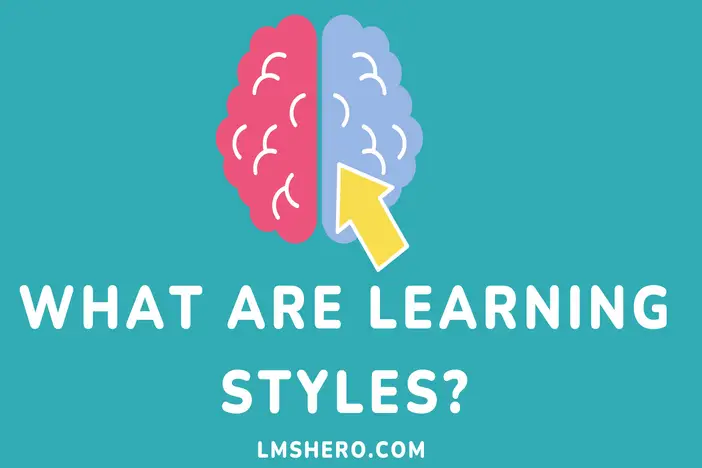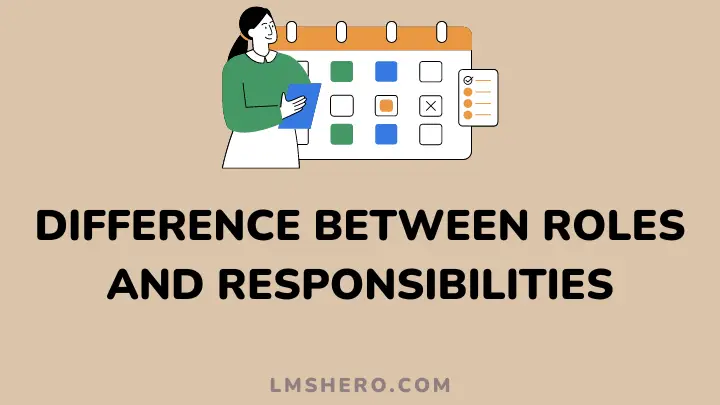Are you a teacher or student wondering what learning styles are available or which are most effective? If yes, then you’re at the right place.
You must first know that there’s no one-size-fits-all regarding how people learn best. These methods of learning are individualized and unique to every one of us.
This article lists a wide variety of methods that are proven to be more effective. And no matter the kind of person you are, there’s a learning method for everyone in this article.
Overview of the Learning Styles Concept
The concept of learning styles, including multiple intelligences, styles, and preferences, was developed by Howard Gardner in 1991.
While some have criticized this theory as naive or insufficiently scientific, others maintain that it can be useful and instructive when applied correctly.
The underlying premise of learning styles is that the way we learn has less to do with intelligence and more with our habits and preferences.
Because everyone has unique talents and approaches to intellectual work, each individual’s education would be improved by considering his or her learning style.
Over the years, many learning methods have been developed to engage learners effectively and enhance their learning ability.
While many claims learning styles are limited to visual, auditory, kinesthetic, and reading/writing, there are more effective learning methods.
What Are The Most Effective Learning Styles?
1. Organizational learning
Organizational learning describes the capacity of an organization to learn as a collective, create new knowledge, and evolve.
This kind of learning involves individuals from different parts of the organization coming together to test new ideas and challenge conventions. They discover insights that will give the company an advantage in the marketplace.
Some examples of how organizational learning style is implemented include:
- Offering courses and seminars to employees
- Distributing books and articles on training topics
- Hosting lunchtime lectures and presentations on relevant topics
- Encouraging team-building exercises
What are the benefits of the organizational learning style?
- Improves employee skills and competency
- Increases productivity levels
- Reduces business risk and improves teamwork
- Creates high-performance teams
- Less money spent on training new staff
- It helps develops meaningful goals and targets
2. Corporate learning
Many of us have experienced the frustration of trying to learn something we don’t know how to do. This happens when you try to excel at something that doesn’t come naturally to you.
And it can be a real drag because you feel like you’re doing something wrong, and that’s demoralizing. You think you can’t or must learn this thing by yourself.
Corporate learning is a category of learning designed for this kind of “easier” learning. While it doesn’t fall under any specific type of learning, it has plenty in common with other corporate training.
They include team-building exercises, presentations, workshops, and so on — but with an added twist: It’s designed for people who aren’t necessarily company employees.
What are the benefits of a corporate learning style?
- It fosters employees’ growth
- Drives organizational competitiveness
- It helps motivate remote workers
- Reduces employee turnover
- Bridges skill gaps
3. Learning through play
Studies show that kids who engage in play-based learning have better academic outcomes and they also have better social results.
When children can utilize their imaginations, they can explore the world in which they live without limits.
Play allows them to experiment with ideas, test theories, and try different roles and situations.
Children who engage in imaginative play will often develop strong language skills because they are forced to verbalize their thoughts and feelings during this play.
The fact that children don’t sit still for long periods may be annoying at times, but it’s also another way they learn.
Children have an innate desire to move around, touch things, and interact with the world. They need to do these things to learn.
What are the benefits of learning through play?
- It helps develop social skills
- It helps develop cognitive, critical thinking, and motor skills
- Play fosters effective communication
- It creates confidence in children
- It encourages relationship building
4. Lifelong learning
At its basic level, lifelong learning is the continuous pursuit of knowledge. It’s like going back to school in many ways, but without necessarily seeking a degree or certification at the end of it.
Instead, the idea is that you take classes and pursue knowledge for the sheer fun of it.
Lifelong learning can be anything from going back to school for a degree in music production after years of working in accounting to taking night classes so you can learn how to paint landscapes.
As long as you’re pursuing knowledge for doing so and not because you have other goals, it’s lifelong learning.
What are the benefits of the lifelong learning style?
- It makes your mind stay sharp
- Keeps you up-to-date on important issues in your field
- Promote leadership skills and team spirit
- Improve your job marketability
- Helps with depression and anxiety
5. Mastery learning
Mastery learning is one of the most effective learning styles. The strategy involves the teacher breaking down information into small, manageable chunks.
The student then practices until they have mastered the material. This style works best for people who need to understand the information before moving forward.
The cornerstone of mastery learning is the idea that all students can learn if given enough time and resources.
With mastery learning programs, educators can reteach lessons or concepts for different students as often as necessary.
What are the benefits of the mastery learning style?
- It helps learners take responsibility for their learning
- It allows you to learn new things
- Improves productivity
- Increased ability to learn and retain new information
- Focus on clear targets
- Teachers have more time to focus on different students
- Creates a positive learning environment focussed on mastery
6. Insight learning
Insight learning (the Gestalt Theory of Learning) is learning without reinforcement.
For example, a rat placed in a maze and learning to run the maze correctly would be showing insight learning.
Insight learning may refer to learning from experience instead of trial and error. Insight learning is one of the most effective learning styles.
This form of learning is often called the “Aha!” moment because it often happens after an extended period of study and research.
What are the benefits of insight learning?
- Development of higher mental faculties
- Encourages application
- Promotes student-teacher interaction
- Insightful solutions can be readily repeated
- Useful for difficult subjects
- Emphasizes understanding
7. Discovery learning
The discovery approach to teaching is often associated with inquiry-based instruction, in which students are encouraged to ask questions, explore answers, and develop their ideas.
Although inquiry-based teaching can use direct instruction as part of the process, it is not limited to lectures, demonstrations, or other forms of teacher-centered instruction.
People who discover information by themselves are more likely to remember what they have found out than if they are told what the information is.
People who learn through discovery are more likely to explore other areas independently and become more well-rounded.
What are the benefits of the discovery learning style?
- Promotes autonomy and independence
- Increases engagement
- It motivates students to learn
- Generates life-long results
- Increases levels of retention
8. Animation-based learning
Animation-based learning is a type of training where animated characters make the content interesting and appealing to the users.
It lets you grab your learners’ attention and enhance their understanding of complex topics.
This is one of the most effective learning styles for children who learn best by doing and seeing things first-hand.
Animation-based learning can use fun, colorful animations, and videos to help children understand the concepts taught much faster than in a traditional classroom.
What are the benefits of an animation-based learning style?
- It allows a deeper engagement with the learner
- Encourages learning
- Animation makes the material to follow and study
- It creates an active learning environment
- Increases retention of knowledge
- It fosters creativity
9. Continuous learning
Continuous learning is also known as self-directed learning or independent study.
It is a learning style that can occur at any time, place, and within any topic, whether personal development or an area of academic interest.
This learning method is about expanding your knowledge and developing the skills and attributes you need to succeed in your studies and career.
The key to success with continuous learning is finding smart ways to learn new things, even when you’re not studying.
It’s about being curious and motivated to find out more about the world around you and about yourself.
What are the benefits of a continuous learning style?
- Continuous learning enables personal growth
- It allows you to keep up with workplace trends
- Boosts cross-team collaboration
- Increases the ability to find a work-life balance
- It stimulates imagination and innovation
- Increases employability
10. Differentiated learning
Differentiated learning is a method teachers employ to help every student reach their full potential.
It means adjusting instruction so all children can master a skill or concept, even if they need to learn it differently.
In the differentiated classroom, some kids may work on multiplication facts while others work on fractions and long division.
This learning style accommodates the individual learning styles and needs of more students simultaneously. It also accommodates the diverse backgrounds that students bring to the classroom.
What are the benefits of a differentiated learning style?
- It is a fun and immersive method of learning
- Promotes personalized learning
- Encourages equal growth for all students
- It increases student engagement
- It grants more flexibility and creativity to teachers
11. Interactive learning
Interactive learning is a method in which students are encouraged to participate in the learning process. It creates an environment that promotes active learning and constructive knowledge building.
Some schools use interactive learning as part of their curricula. In these schools, students receive encouragement to work together to solve problems and complete tasks.
They also work together to create new ideas and theories that can be tested against academic standards.
Teachers also use this method to reinforce classroom lessons with projects and activities.
What are the benefits of an interactive learning style?
- Increased understanding and retention
- Students learn and retain more through hands-on activities
- Builds confidence in the learners
- It gives students the chance to think about a lesson rather than recall it
- Build relationships between teachers, students, and parents
12. Game-based learning
A game-based learning strategy involves creating engaging content based on a game and embedding it within a flow of learning content.
Learners are incentivized to complete the learning path by being allowed to compete against one another for points, badges, and/or leaderboard positioning.
The objective is for learners to complete all the content to advance through the game levels. Game-based learning is a great way to help students learn.
It’s also a great way to connect with them, building on your overall relationship while they’re in your classroom.
What are the benefits of a game-based learning style?
- Encourages critical thinking
- Helps problem-solving
- Increases student’s retention and comprehension
- Increases student engagement and motivation
- Introduces situational learning
- Addresses special education needs
13. Social-emotional learning
Social-emotional learning (SEL) is one of the most effective learning methods for many children.
This learning focuses on building students’ emotional awareness and empathy through collaboration with their classmates and teachers.
Today’s job market requires students to do more than memorize facts and figures; they have to be able to work together with other people to solve problems and complete tasks.
SEL can help prepare your child for these situations by teaching them skills like respect and teamwork.
What are the benefits of a social-emotional learning style?
- Helps students set and meet goals
- Increases in school attendance
- Improves test scores and grades
- Teaches problem-solving skills
- Increases student motivation
- It gives a space to talk about mental health
14. Observational learning
Observational learning is another effective learning style. This style uses observation, reflection on experiences, and copying others as their learning method.
People with this style are good at watching others and trying out what they have learned.
Observational learning is learning from observing others in real life or through the media.
If you’ve ever learned to cook by watching your mother in the kitchen or learned to tie your shoes by watching a friend, then you know observational learning firsthand.
What are the benefits of the observational learning style?
- Encourages social interactions
- Improves behavior in children
- Enhances memory
- Influences mannerism
- It expands knowledge
15. Smart learning
Smart learning is a learning style where the learner takes responsibility for learning and achieving the best results with limited resources.
The smart learning style can be applied in any subject, meaning the learner can develop a more in-depth knowledge of an area they are interested.
People with this style learn best when they see and hear information. Examples include watching online tutorials, attending workshops, or reading graphic novels.
The key to effective smart learning is clearly understanding what you want from your teaching session so that you can plan how best to achieve this goal.
What are the benefits of a smart learning style?
- It is an energy-saving learning method
- It boosts productivity
- Increases motivation
- Increases self-esteem
FAQs
How can you find out what your learning styles are?
The best way to discover your learning styles is by experimenting with a couple of them and taking note of the ones that bring about desirable results.
Should you know your child’s learning style?
Yes, it could make a huge difference for you. In fact, this is one of the most important things every parent must learn about their child.
Conclusion
Learning styles refer to the differences in how people learn. Some people can understand things by listening, while others need to see or physically do it themselves.
You may also prefer a particular learning style or combination of styles.
It is important to recognize your learning preferences and develop an understanding of the learning needs of others.
If you have found yourself bored while learning, are easily distracted, or can’t focus on a topic as long as others, you may not have been using the right learning style.
And if you’re a teacher, using the most effective learning methods for your student can bring desirable results instead of wasting your time.
If you need help finding your or your student’s learning style, here are other effective learning styles you may want to exploit.
I hope you found this article helpful. Thanks for reading.






